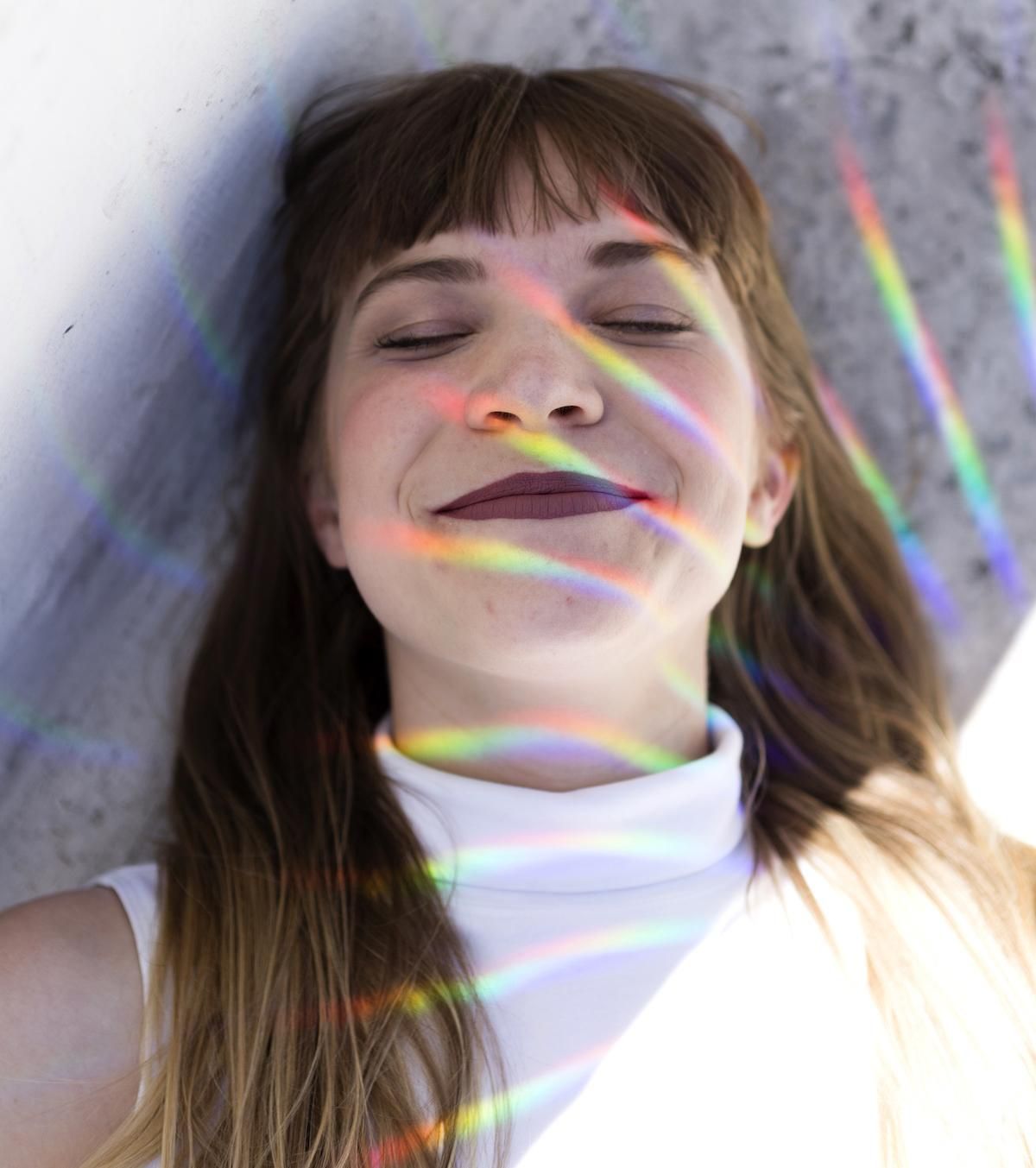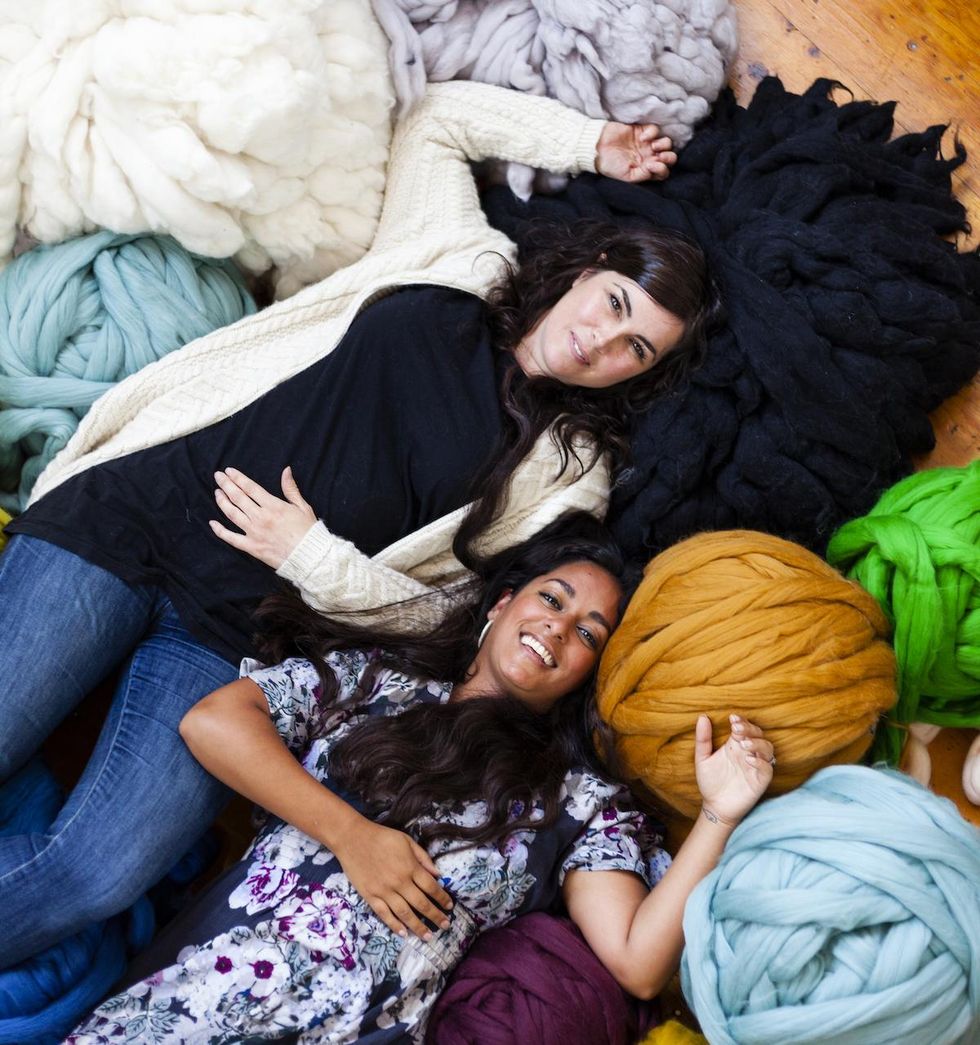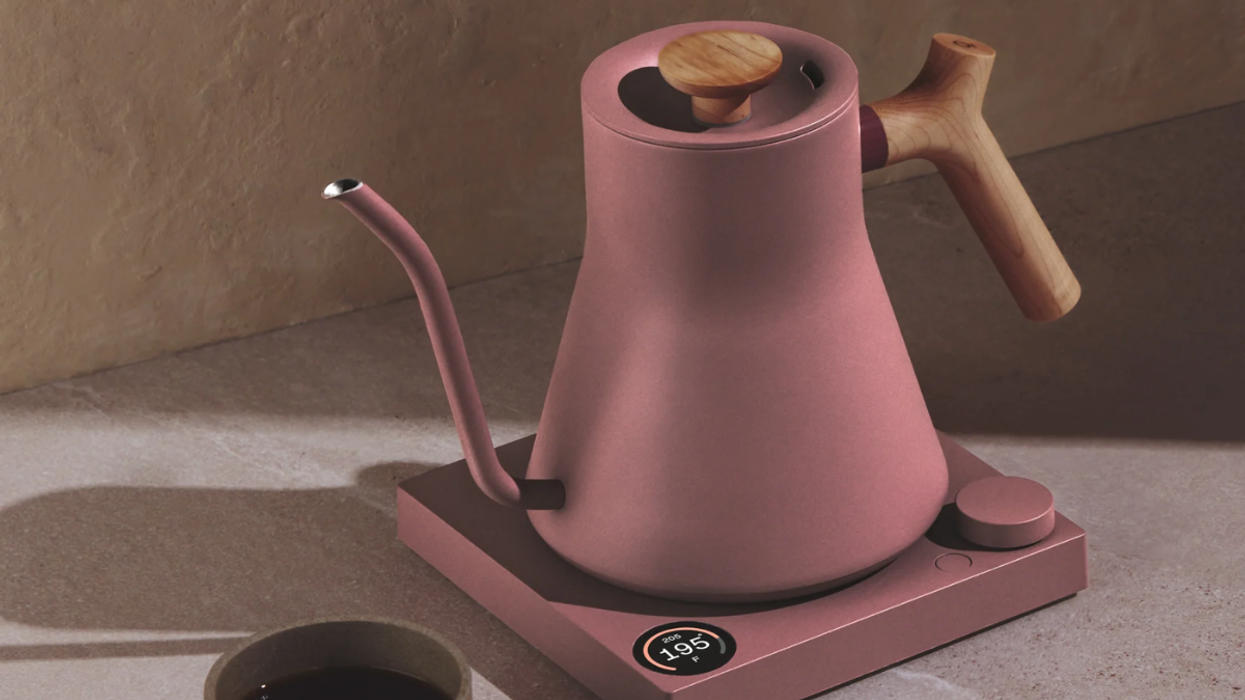Feel all the feels.
Here's How Art Therapy Can Help You Process Your Emotions And Strengthen Your Brain

Chloe Williams serves as B+C’s Entertainment Editor and resident Taylor Swift expert. Whether she’s writing a movie review or interviewing the stars of the latest hit show, Chloe loves exploring why stories inspire us. You can see her work published in BuzzFeed, Coastal Review, and North Beach Sun. When she’s not writing, Chloe’s probably watching a Marvel movie with a cherry coke or texting her sister about the latest celebrity news. Say hi at @thechloewilliams on Insta and @popculturechlo on Twitter!
Art has always been a beautiful thing because of, well, its beauty. There's something relaxing and therapeutic about creating something just for the sake of creating it. It doesn't have to be utilitarian, it doesn't have to make sense, and you can make it as private or public as you want. That kind of emotional release is exactly what we need when we're fighting the winter blues or just having a really bad day.
We talked to Dr. Vanessa Kennedy, Director of Psychology at Driftwood Recovery, about how art therapy (using your favorite medium of art to express your emotions) can help you process how you're feeling, and how it can actually strengthen your brain along the way.
One thing that's important to note is that art alone is not a replacement for professional therapy if that's something you need, nor can it cure anxiety and depression if you're facing them. But if you're looking to boost your creativity and your mood, keep reading for Dr. Kennedy's advice.
If you're facing a problem — you're not sure if you should end a relationship, you're stressed about work, or you're in a funk and don't know why — art can help boost your mood, even if you're not fixing an actual problem. Art, whether you're painting, singing, or doing pottery, can reduce the stress hormone cortisol's levels in the body, and increase your serotonin levels, according to PNAS. Not to mention that when you're working with your hands, you're not doomscrolling on social media. Talk about a win-win-win!
For beginners and experts alike, there are particular skills that you need to do art, and those skills can actually help you access emotions that are otherwise difficult to find.
"Sculpting with clay is a tactile manipulation process that may engage more concentration and movement to create a piece," Dr. Kennedy says. "In contrast, journaling may tap more into verbal skills and unlock emotions that are important to express. Painting with oils, which takes more time to dry and may require more patience, might be a very different experience than painting with watercolor, which can be more difficult to control."
The good thing about working with art therapy is that, even if it stretches your patience or concentration, it's something that you can control. You're in total control of what activity you choose to do, what products you use, even if you need to relinquish some control over what the final product looks like.

Regardless of which medium you prefer, Dr. Kennedy says that these creative outlets allow us to focus on, and rest in, the present moment. Not to mention the fact that we're also tapping into more than one, if not all, of our five senses when creating art, which can help us practice mindfulness.
You might prefer to bullet journal and scrapbook, or love to turn on music and paint a visual representation of what you hear, but it can actually be beneficial for your mind to switch mediums every once in awhile. Even if it's something you feel you're not good at.
"Switching mediums for creative outlets can tap into various cognitive processes, promoting cognitive flexibility or neuroplasticity [which is the ability of the brain to remain flexible and grow in response to stimulation]," says Dr. Kennedy. Singing taps into the speech and sound production centers of your brain, while physical art like pottery exercises your sensory centers. "These sensory channels for input promote being fully immersed in the present moment, an essential aspect of mindfulness, relaxation, and anxiety reduction."
Because of the fact that they use different areas of your brain, creating with your hands and creating with your mind can also have different effects on your mental health — but one isn't necessarily better than the other.
"Creating with your hands can be just as therapeutic as creating a story with your mind through creative writing, and these activities use some brain regions in common, yet others differ," says Dr. Kennedy. An activity like embroidery engages your whole brain by using the left side to analyze threads and stitches, and the right side to create patterns, compare colors, and visualize the end result.
"While more complex relationships exist between creative, visualization, sensory, and motor regions within the brain, they are nonetheless all engaged in a focused activity that taps into our senses and promotes mindfulness," Dr. Kennedy says. "Therefore, our brains release more dopamine, a neurotransmitter involved in activating the brain’s reward system, when engaged in a satisfying creative activity."
This is definitely an excuse to buy (another) adult coloring book, or keep a journal to jot down story ideas wherever you go. You never know when inspiration will strike!
The best part about these artistic projects is that they're fun *and* they count as self-care. "Artistic, creatively-loaded activities involve many brain functions working in concert," Dr. Kennedy says. "[They] can improve mood through increased serotonin and dopamine and an overall reduction in cortisol levels."
"Regular incorporation of these activities can have a similar impact to meditation by reducing anxiety and depression levels," she continues. "Sharing your creative projects with others can also add an extra layer of mood and confidence boost through the emotional satisfaction of creating something for someone you love. While the primary goal is self-care to improve your mental health, you may end up inspiring someone else as a bonus."
Check out our DIY page for more artsy ideas and let us know your thoughts on art therapy in the comments.
















